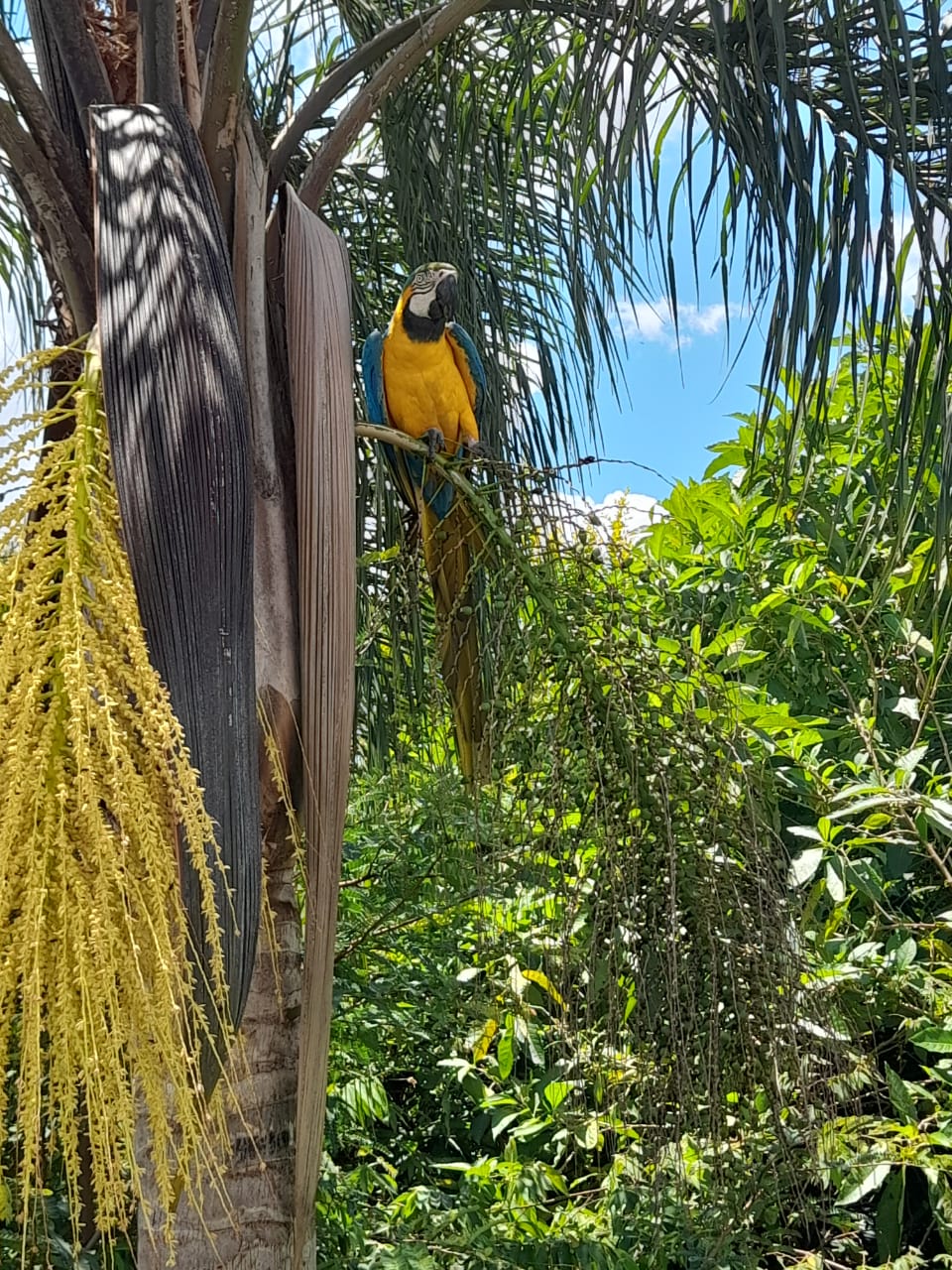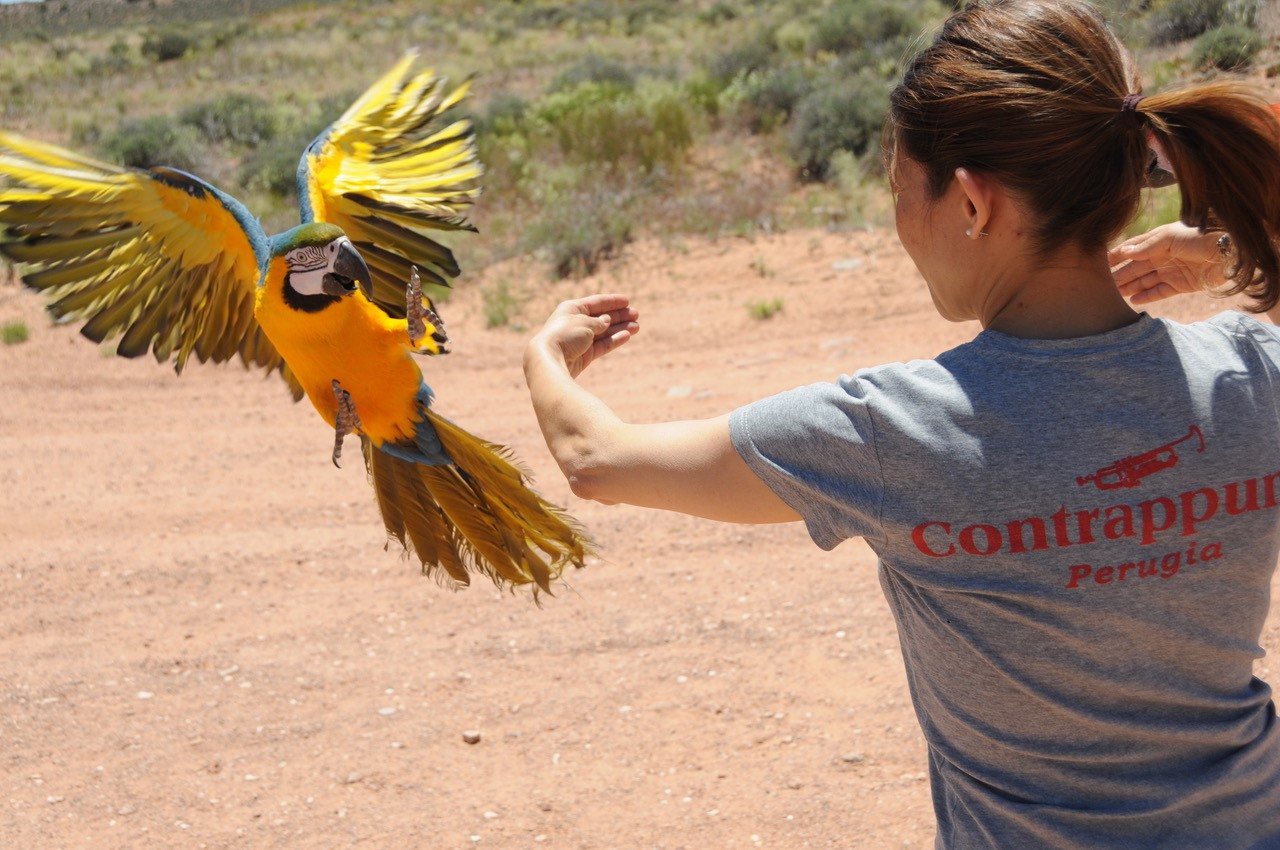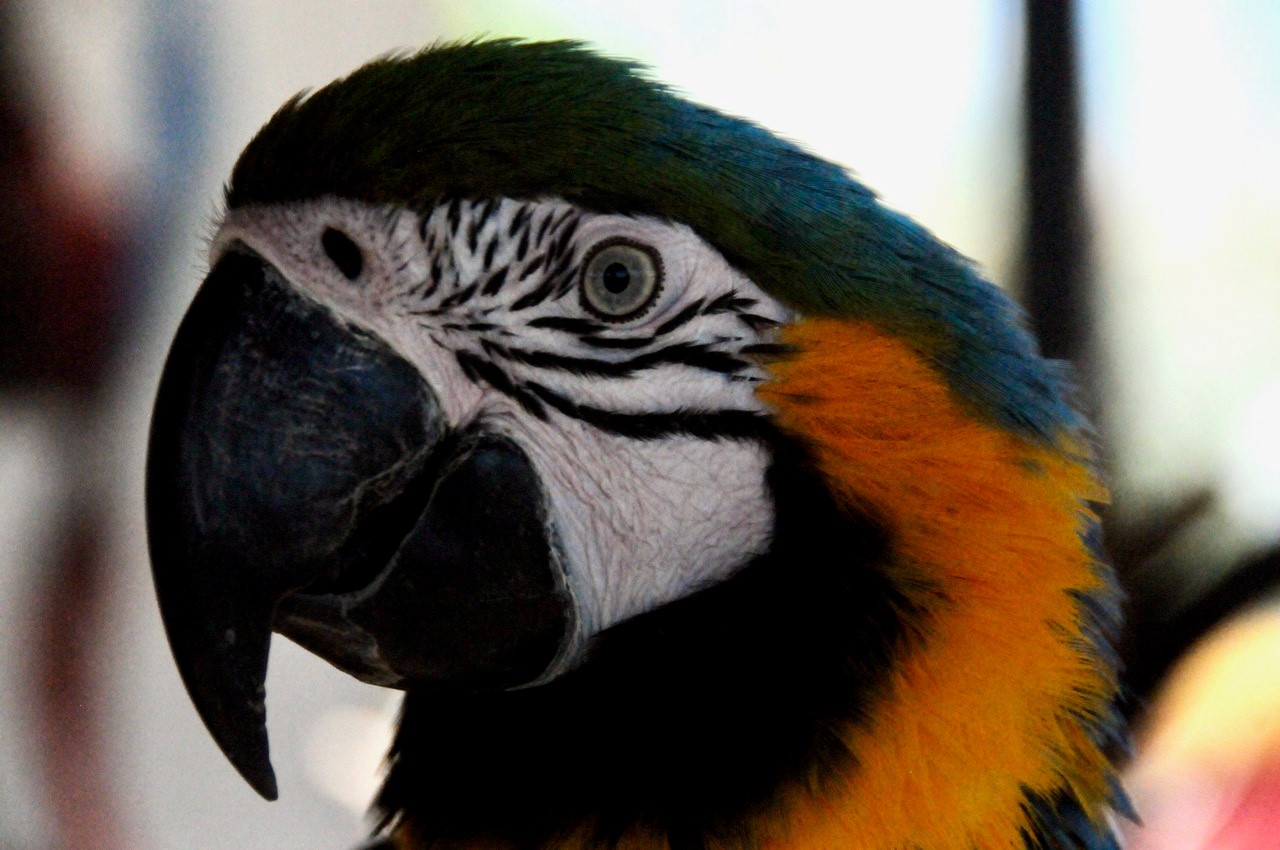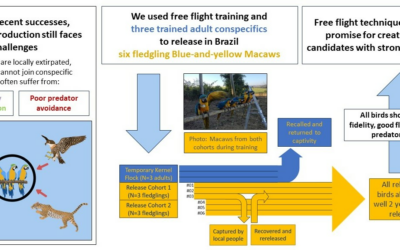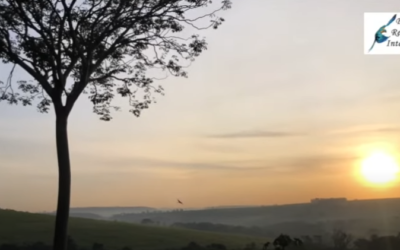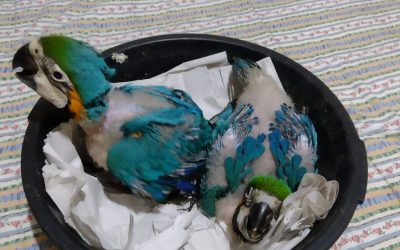BRI
Blue & Yellow Macaws
About Our Project
BRI’s Blue & Yellow Macaw Project in Brazil
Introduction
Parrots are one of the most endangered groups of birds globally due to a mixture of capture for illegal trade and habitat loss (Olah et al. 2016, Berkunsky et al. 2017). As a result, over 50 threatened species have been identified as potentially benefitting from captive breed and release programs (IUCN 2021). Fortunately, the science of parrot releases has improved in the past 20 years, but progress has been slow and there is still much we need to learn about the best ways to prepare parrots for release into the wild (Brightsmith et al. 2005, White et al. 2012, White et al. 2021, Woodman et al. 2021).
Among private parrot owners, there is a well-established system for preparing hand raised pet parrots to fly in outdoor environments, known as free-flight training. These free-flight techniques teach parrots to avoid predators, form cohesive flocks, and forage for food. As a result, they have great potential for preparing parrots for reintroduction in to the wild (Woodman et al. 2021). However, this technique has not been tested for releasing birds back in to their native ranges. Showing the conservation community that hand raised parrots can make strong contributions to conservation projects is an important step for both conservation and aviculture and may help bridge the gap between these two important fields.
TO DATE; As of January 2023
-
Permits obtained to release 18 Blue & Yellow macaws. Mobile aviary constructed and at the release site. Six baby Blue & Yellow Macaws obtained.
- All six birds are now living as wild birds without supplemental feeding or support from humans. They are seeking out natural food sources in nearby areas.
- Currently fundraising to release the remaining 12 Blue & Yellow macaws – our permit has also been approved to release 18 Greenwing macaws and 18 Noble macaws. If we can generate the funding, we will release all 48 birds during the same time frame, depending on our ability to obtain suitably aged chicks.
Our Work We plan to release up to 18 BYMA in Brazil in an area where the birds have gone extinct. To do this we are using fledgling aged birds hatched by private breeders to demonstrate our method that is based on knowledge gained from 30 years of flying parrots as pets and as part of our educational parrot shows. This approach allows us to re-establish birds in areas they are gone from, where there are no existing wild birds of this species, to do so with minimal cost and with a very low mortality rate.
The goals of the project are to:
- Show how the training strategies and methods used for training pet birds to fly, navigate and
avoid predators can be used to improve survival and reproduction of parrots released in to the
wild - Develop a method for creating a “core flock” of released macaws in a site where there currently
are no wild birds - Demonstrate how captive raised birds from the pet trade can be utilized for conservation
Our Team
Humberto Mendes, PhD is a former entomologist with over 20 years’ experience in natural sciences describing over a hundred new species. He holds a PhD in Zoology from the University of Bergen (Norway), and an MS and PhD in Entomology from the University of São Paulo. He is a lifelong parrot owner and has been dedicated to free-flight training since 2017. In 2018, he started a group with undergraduate students to study the major factors involved in the process of free-flight training. He is presently on a research sabbatical and dedicated fulltime to this project.
Chris Biro is a professional animal trainer who has been training and flying parrots since 1993. He is a pioneer in the field of teaching others how to free-fly their birds, with over 450 students in over 35 countries. He has spoken on free-flight training at the American Federation of Aviculture (AFA) Conference, National Parrot Rescue & Preservation Foundation (NPRPF), International Association of Avian Trainers and Educators (IAATE) Conference, and Parrots International Symposium. He has also presented seminars in France (2009), Portugal (2009), the Netherlands (2010 & 2018) and Brazil (2019). He is currently working on a book about behavior and parrot free-flight.
Donald Brightsmith, PhD is a leading parrot conservation biologist with nearly 30 years of experience studying wild parrots in Peru and other areas of Latin America. He has a BS in Natural Resources from Cornell University, an MS in Wildlife Ecology from University of Arizona and a PhD in Zoology from Duke University. He is a member of the Advisory Board for Parrots International as well as a co-coordinator for the Neotropical Region of the Parrot Researcher’s Group. He has also published over 70 scientific articles on a wide variety of parrot related topics including reintroduction, ecology, conservation, reproduction, clay lick use, genetics, behavioral training, and nutrition.
How you can help
Please consider using the button at the bottom of the page to make a donation to support this project.
Updates on the Blue & Yellow Macaw Project
The End Result
2024 Scientific Paper describing Blue and Yellow Macaw release project in Brazil with 100% survival two years after release.
B&Y Macaw Release Mini Documentary
Enjoy our NEWEST mini-documentary about our Blue and Gold release project in Brazil. We think you will enjoy it!
“Boots on the Ground” with Blue & Yellow Babies
Official "boots on the ground" with our first two baby Blue & Yellow Macaws!Feeding the babies
Cited Literature
Berkunsky, I., P. Quillfeldt, D. J. Brightsmith, M. C. Abbud, J. M. R. E. Aguilar, U. Alemán-Zelaya, R. M. Aramburú, A. Arce Arias, R. Balas McNab, T. J. S. Balsby, J. M. Barredo Barberena, S. R. Beissinger, M. Rosales, K. S. Berg, C. A. Bianchi, E. Blanco, A. Bodrati, C. Bonilla-Ruz, E. Botero-Delgadillo, S. B. Canavelli, R. Caparroz, R. E. Cepeda, O. Chassot, C. Cinta-Magallón, K. L. Cockle, G. Daniele, C. B. de Araujo, A. E. de Barbosa, L. N. de Moura, H. Del Castillo, S. Díaz, J. A. Díaz-Luque, L. Douglas, A. Figueroa Rodríguez, R. A. García-Anleu, J. D. Gilardi, P. G. Grilli, J. C. Guix, M. Hernández, A. Hernández-Muñoz, F. Hiraldo, E. Horstman, R. Ibarra Portillo, J. P. Isacch, J. E. Jiménez, L. Joyner, M. Juarez, F. P. Kacoliris, V. T. Kanaan, L. Klemann-Júnior, S. C. Latta, A. T. K. Lee, A. Lesterhuis, M. Lezama-López, C. Lugarini, G. Marateo, C. B. Marinelli, J. Martínez, M. S. McReynolds, C. R. Mejia Urbina, G. Monge-Arias, T. C. Monterrubio-Rico, A. P. Nunes, F. Nunes, C. Olaciregui, J. Ortega-Arguelles, E. Pacifico, L. Pagano, N. Politi, G. Ponce-Santizo, H. O. Portillo Reyes, N. P. Prestes, F. Presti, K. Renton, G. Reyes-Macedo, E. Ringler, L. Rivera, A. Rodríguez-Ferraro, A. M. Rojas-Valverde, R. E. Rojas-Llanos, Y. G. Rubio-Rocha, A. B. S. Saidenberg, A. Salinas-Melgoza, V. Sanz, H. M. Schaefer, P. Scherer-Neto, G. H. F. Seixas, P. Serafini, L. F. Silveira, E. A. B. Sipinski, M. Somenzari, D. Susanibar, J. L. Tella, C. Torres-Sovero, C. Trofino-alasco, R. Vargas-Rodríguez, L. D. Vázquez-Reyes, T. H. White Jr, S. Williams, R. Zarza, and J. F. Masello. 2017. Current threats faced by Neotropical parrot populations. Biological Conservation 214:278-287.
Brightsmith, D. J., J. Hilburn, A. Del Campo, J. Boyd, M. Frisius, R. Frisius, D. Janik, and F. Guillén. 2005.
The use of hand-raised Psittacines for reintroduction: a case study of Scarlet Macaws (Ara
macao) in Peru and Costa Rica. Biological Conservation 121:465-472.
IUCN. 2021. Red List of Threatened Species.
Olah, G., S. H. M. Butchart, A. Symes, I. M. Guzmán, R. Cunningham, D. J. Brightsmith, and R. Heinsohn.
2016. Ecological and socio-economic factors affecting extinction risk in parrots. Biodiversity and Conservation 25:205-223.
White, T. H., W. Abreu, G. Benitez, A. Jhonson, M. Lopez, L. Ramirez, I. Rodriguez, M. Toledo, P. Torres, and J. Velez. 2021. Minimizing Potential Allee Effects in Psittacine Reintroductions: An Example from Puerto Rico. 13:13.
White, T. H., N. J. Collar, R. J. Moorhouse, V. Sanz, E. D. Stolen, and D. J. Brightsmith. 2012. Psittacine reintroductions: common denominators of success. Biological Conservation 148:106-115.
Woodman, C., C. Biro, and D. J. Brightsmith. 2021. Parrot Free-Flight as a Conservation Tool. 13:254.
Support Us
BRI could not exist without the generosity of our supporters.
By making a tax deductible donation to support the work being done by BRI, you join a community that is committed to helping save endangered bird species for future generations.
With your gift you are investing in nature’s future and become a partner with BRI as we work to save endangered birds through reintroduction programs, research, education, and habitat conservation efforts.
